Dealing with a broken latch stuck in a closed door can be a frustrating and challenging situation, especially when it prevents access or compromises security.
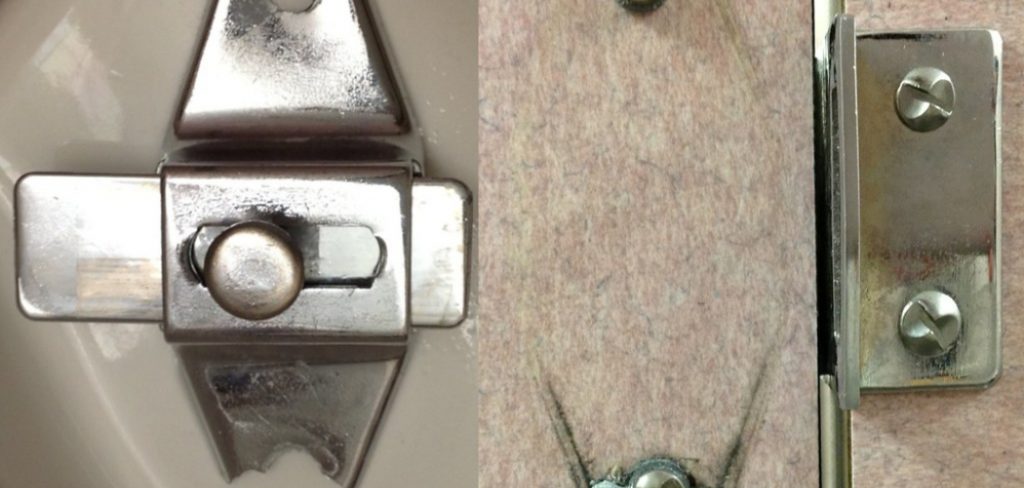
Whether due to wear and tear or a mechanical failure, removing a broken latch requires careful handling to avoid damaging the door or surrounding frame. In this guide, we’ll walk you through effective methods for how to remove a broken latch from a closed door.
From assessing the situation to using the right tools and techniques, our step-by-step instructions will help you resolve this issue swiftly and restore normal functionality to your door.
Importance of Safely Removing a Broken Latch from a Closed Door
Safely removing a broken latch from a closed door is crucial for several reasons. Firstly, attempting to forcefully remove the latch without proper care and tools can cause significant damage to the door, its frame, and the surrounding hardware, leading to expensive repairs or replacements.
Secondly, a broken latch can compromise the security of your home or office, leaving it vulnerable to unauthorized access. Ensuring that the latch is safely and effectively removed can restore both functionality and security to the door.
Moreover, a methodical approach to removing the latch minimizes the risk of injury, such as cuts or bruises, which could occur if improper techniques or tools are used.
By following appropriate removal procedures, you not only save time and money but also enhance the safety and security of your premises.
Identifying the Type of Latch and Door Mechanism
Before attempting to remove a broken latch from a closed door, it’s essential to identify the type of latch and door mechanism you’re dealing with. Different latches and door mechanisms require varied approaches for effective removal.
The most common types of latches include spring latches, deadbolts, and mortise locks. Spring latches typically have a spring-loaded bolt that retracts when the door handle is turned, while deadbolts provide a higher level of security with a manually operated bolt.
Mortise locks, often found in older buildings, feature a complex assembly embedded within the door itself.
To accurately identify the latch type, inspect the door’s edge for visible components such as screws, keyholes, or latch plates. Additionally, check the door handle’s operation to understand the locking mechanism.
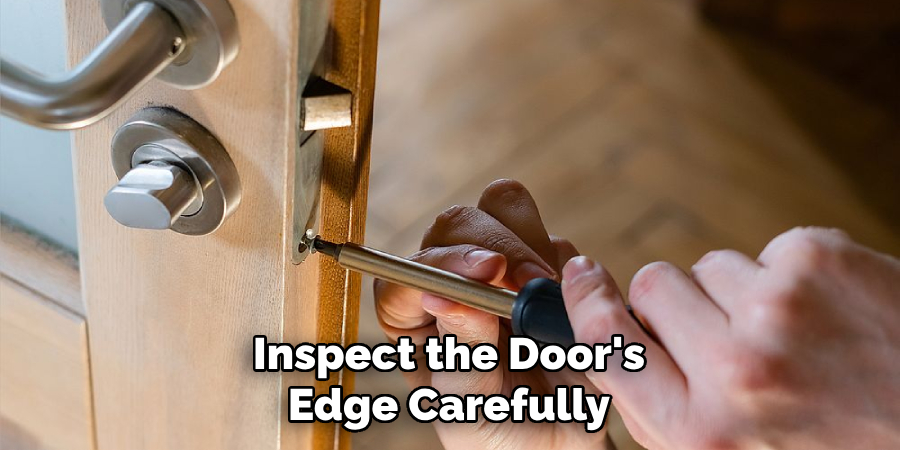
For instance, if turning the handle doesn’t retract the bolt, you might be dealing with a deadbolt or a broken spring latch. Understanding these distinctions will help you determine the appropriate tools and techniques needed for safely removing the broken latch without causing further damage to the door or frame.
10 Methods How to Remove a Broken Latch from a Closed Door
Method 1: Assessing the Situation and Gathering Tools
Before attempting to remove a broken latch from a closed door, it is crucial to assess the situation thoroughly. Examine the type of latch and the door’s material to determine the best approach.
Typically, you will need a set of tools such as a flathead screwdriver, Phillips screwdriver, hammer, pliers, utility knife, and a lubricant like WD-40.
Additionally, having a flashlight can help you see inside the latch mechanism more clearly. By carefully assessing the situation and gathering all necessary tools in advance, you can ensure a smoother and more efficient removal process.
Method 2: Lubricating the Latch Mechanism
A broken latch can often be jammed due to dirt, rust, or other debris. Applying a lubricant such as WD-40 can help loosen the mechanism and make it easier to manipulate.
Spray the lubricant into the latch and keyhole, and allow it to sit for a few minutes. Use the key or a flathead screwdriver to gently wiggle the latch back and forth. This method can sometimes be enough to free a stuck latch and open the door without further intervention.
Lubricating the latch mechanism not only facilitates the removal process but also prevents additional damage.
Method 3: Using a Credit Card or Similar Object
For a simple yet effective method, try using a credit card or similar flat, sturdy object. Insert the card between the door frame and the latch, and attempt to push the latch back into the door.
Wiggle the card up and down while applying gentle pressure to retract the latch. This method works best with spring latch types and can often provide a quick and non-destructive solution.
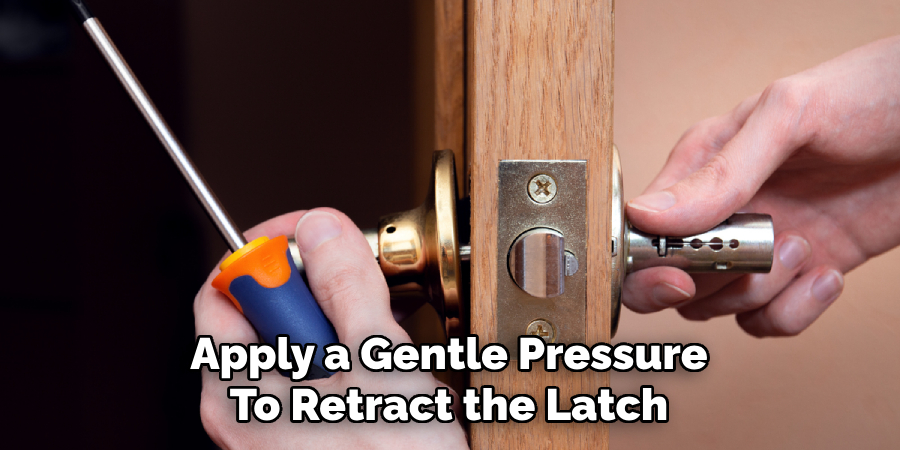
Using a credit card is a common technique that leverages the flexibility and strength of the card to manipulate the latch mechanism from outside the door.
Method 4: Removing the Door Handle or Knob
If the previous methods do not work, removing the door handle or knob can give you better access to the latch mechanism. Use a flathead or Phillips screwdriver to unscrew the handle or knob from both sides of the door.
Once the handle or knob is removed, you should be able to see the latch mechanism inside the door. Use pliers or a screwdriver to manipulate the latch and open the door.
This method provides a more direct approach to accessing the broken latch, allowing for more precise manipulation and removal.
Method 5: Drilling Out the Latch
In more severe cases where the latch is severely jammed or broken, drilling out the latch may be necessary. Begin by drilling a small pilot hole in the center of the latch.
Gradually increase the size of the drill bit until the latch mechanism is destroyed enough to allow the door to open. Be careful not to damage the door or door frame while drilling.
This method should be used as a last resort, as it will likely damage the latch mechanism and require replacement. Drilling out the latch provides a direct but invasive solution for stubborn or irreparably damaged latches.
Method 6: Using a Lock Pick Set
For those with experience in lock picking, using lock pick set can be an effective method. Insert a tension wrench into the keyhole and apply gentle pressure. Use a lock pick to manipulate the pins inside the lock, attempting to set them in the correct position to retract the latch.
This method requires skill and patience but can be very effective without causing damage to the door. Lock picking leverages the intricate mechanics of the lock to manipulate the internal components and release the latch.
Method 7: Calling a Professional Locksmith
If you are unable to remove the broken latch using DIY methods, calling a professional locksmith is a reliable option. Locksmiths have specialized tools and expertise to handle broken latches and locked doors without causing unnecessary damage.
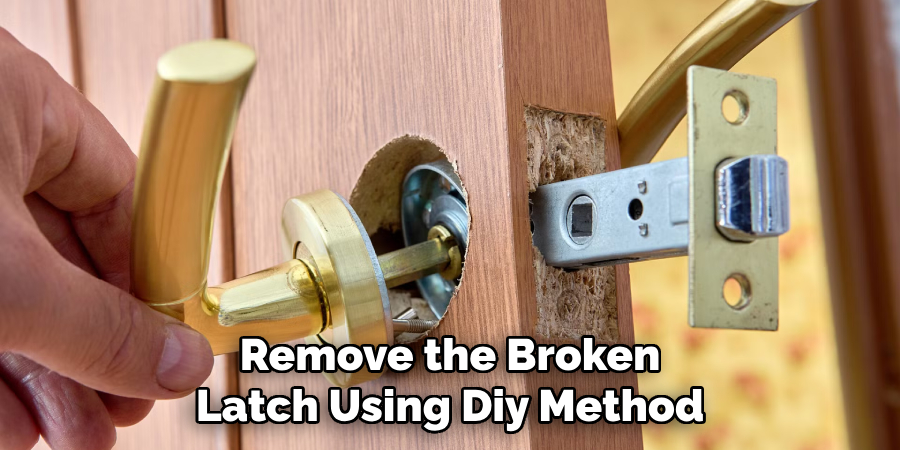
A professional can quickly assess the situation and use the appropriate techniques to open the door and replace the latch if needed. Hiring a locksmith ensures that the job is done correctly and safely, particularly for high-security locks or complex latch mechanisms.
Method 8: Removing the Hinges
If all else fails, removing the door hinges can provide an alternative way to access and remove the broken latch. Use a hammer and screwdriver to tap out the hinge pins from the door hinges.
Once the pins are removed, carefully lift the door off the hinges and set it aside. This will give you full access to the latch mechanism, which can then be removed and replaced.
Removing the hinges is a more labor-intensive method but guarantees access to the latch without further damaging the door or frame.
Method 9: Cutting the Latch
In extreme cases where other methods have failed, cutting the latch may be necessary. Use a hacksaw or an oscillating multi-tool with a metal-cutting blade to carefully cut through the latch bolt.
Be cautious to avoid damaging the door or frame. Once the latch is cut, the door should be able to open, allowing you to replace the broken latch.
This method should be considered a last resort due to the potential for damage and the need for subsequent repairs. Cutting the latch provides a definitive solution for irreparably jammed or broken latches.
Method 10: Inspecting and Replacing the Latch Mechanism
After successfully removing the broken latch and opening the door, it is important to inspect the latch mechanism to determine the cause of the failure. Check for signs of wear, rust, or damage.
Replace the latch with a new one that matches the door and frame specifications. Follow the manufacturer’s instructions for installation to ensure proper alignment and functionality.
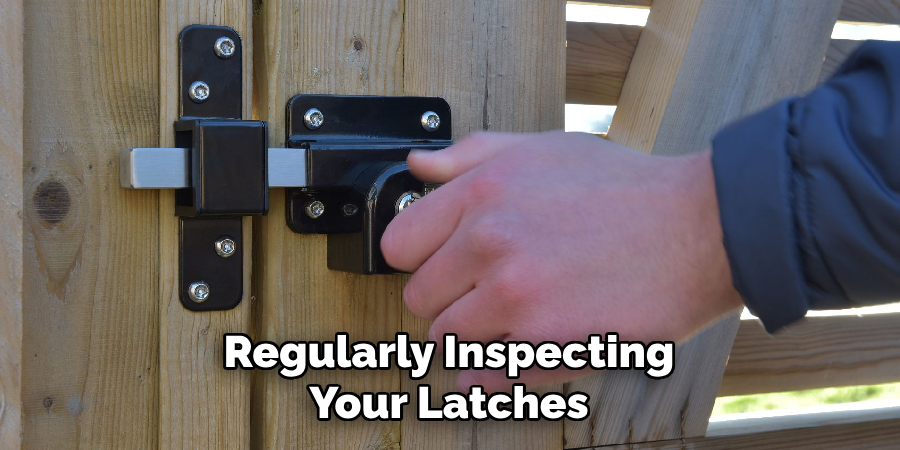
Regular maintenance and lubrication can help prevent future latch failures. Inspecting and replacing the latch mechanism ensures that the door operates smoothly and securely, preventing similar issues in the future.
Things to Consider When Addressing a Broken Latch
Addressing a broken latch requires consideration of several key factors to ensure a successful and damage-free resolution. First, assess the severity and nature of the latch problem; determine if the latch is merely stuck or if it is fundamentally damaged.
Secondly, consider the type of lock and door you are dealing with. Different locks (e.g., deadbolts, spring latches) and materials (e.g., wood, metal) may necessitate specific techniques or tools.
Thirdly, evaluate whether you have the necessary skills and tools to undertake a repair or if it is more prudent to seek professional assistance.
Furthermore, take into account the potential risks of each method, such as damage to the door, frame, or the lock mechanism itself, especially with more invasive techniques like drilling or cutting.
Overall, careful consideration and proper execution are vital to successfully addressing a broken latch without causing further damage or complications.
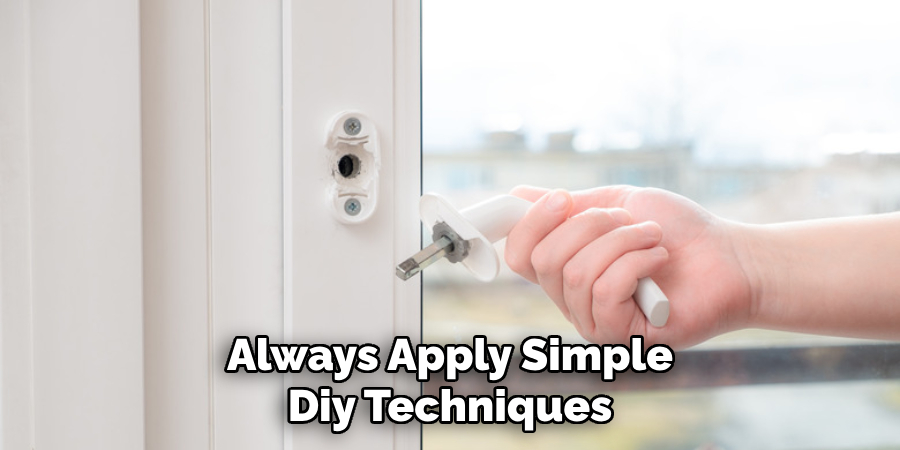
Ultimately, the most effective method will depend on the individual circumstances and level of difficulty in accessing and manipulating the broken latch. With these considerations in mind, you can choose the best approach for your particular situation and safely resolve any issues with your door’s latch.
Conclusion
Dealing with a broken latch can be frustrating, but with the variety of methods discussed—ranging from simple DIY techniques to more intensive solutions—there is almost always a way to resolve the issue.
Whether you choose to lubricate the latch, use a credit card, or even call a professional locksmith, understanding these methods can save you time, money, and further damage to your door.
Regular maintenance, such as lubricating the latch mechanism and inspecting for wear and tear, can help prevent future problems. Thanks for reading, and we hope this has given you some inspiration on how to remove a broken latch from a closed door!
About
Safety Fic is a distinguished figure in the world of Diy design, with a decade of expertise creating innovative and sustainable Diy solutions. His professional focus lies in merging traditional craftsmanship with modern manufacturing techniques, fostering designs that are both practical and environmentally conscious. As the author of diy, Safety Fic delves into the art and science of Safety Fic-making, inspiring artisans and industry professionals alike.
Education RMIT University
(Melbourne, Australia) Associate Degree in Design (Safety Fic) Focus on sustainable design, industry-driven projects, and practical craftsmanship. Gained hands-on experience with traditional and digital manufacturing tools, such as CAD and CNC software.
Nottingham Trent University
(United Kingdom) Bachelor’s in diyfastly.com and Product Design (Honors) Specialized in product design with a focus on blending creativity with production techniques. Participated in industry projects, working with companies like John Lewis and Vitsoe to gain real-world insights.
Publications and Impact
In diy, Safety Fic his insights on indoor design processes, materials, and strategies for efficient production. His writing bridges the gap between artisan knowledge and modern industry needs, making it a must-read for both budding designers and seasoned professionals.
